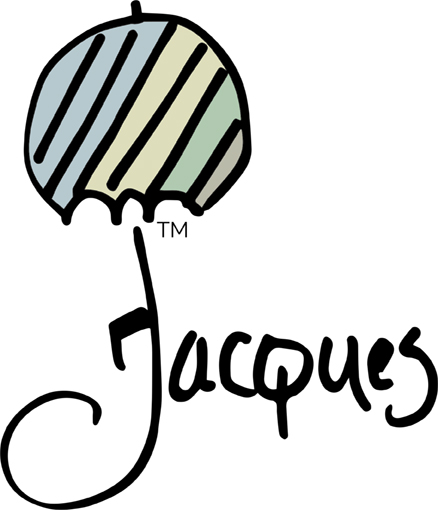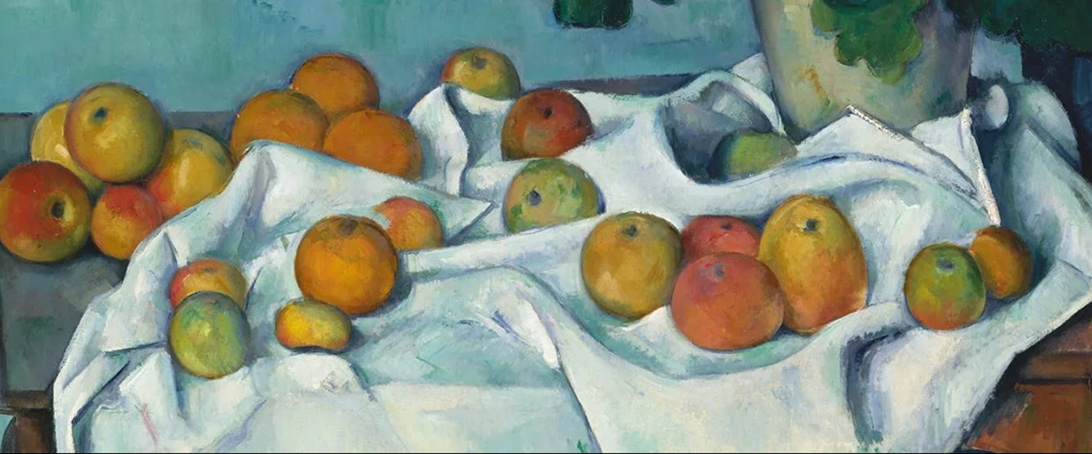Fruits and vegetables are part of a rich history of still life in art. We explore some of the art and science of that history.
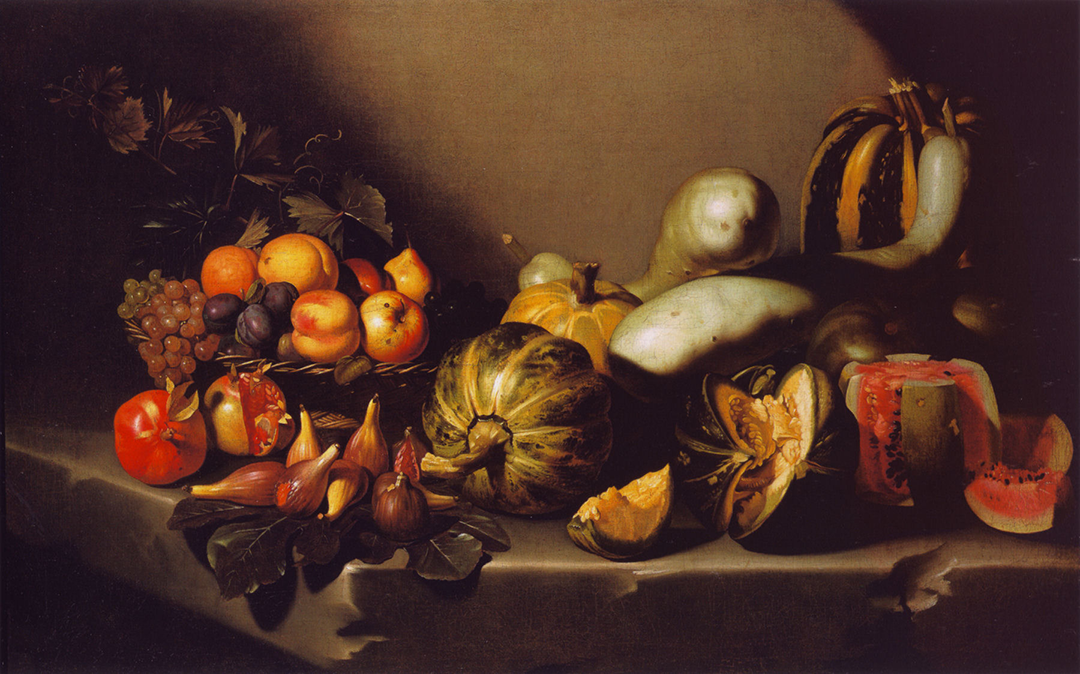 Vice: “Old Paintings Reveal How Fruits and Vegetables Have Evolved Over the Centuries” [*]
Vice: “Old Paintings Reveal How Fruits and Vegetables Have Evolved Over the Centuries” [*]
“Art historians have literally spent several hundred years poring over the dozens of symbols, allegories, and intentions in the three panels of The Garden of Earthly Delights, painted by Hieronymus Bosch sometime in the late 15th or early 16th century. The triptych shows a blissed-out Adam and Eve in its first panel, an orgiastic tangle of assorted pleasures in the center, and a terrifying third scene that depicts a dark hellscape where humans are tortured and devoured whole by a bird-headed being (and at least one person ends up with a woodwind instrument in his ass).
Weirdly, strawberries are so plentiful in the middle panel that one historian named the entire thing “Strawberry Plant,” while it was listed as “The Strawberry” in a late 16th-century inventory of Philip II of Spain’s art collection. The meaning and importance of the strawberries—most of which are bigger than the naked humans trying to eat them—has been debated. But, size aside, a biologist and an art historian have agreed that Bosch did paint a pretty accurate 16th-century strawberry.
Ive De Smet, a plant biologist at VIB-UGent Center for Plant Systems Biology in Belgium, and David Vergauwen, a Belgian art history lecturer, have been studying the fruits and vegetables depicted in paintings and using those artworks to determine how plant-based foods have evolved over the course of hundreds, if not thousands, of years. They’re calling this approach #ArtGenetics.”*Quotation above is taken directly from the website cited and is the property of that source. It is meant to inform the reader and to give credit where it is due.
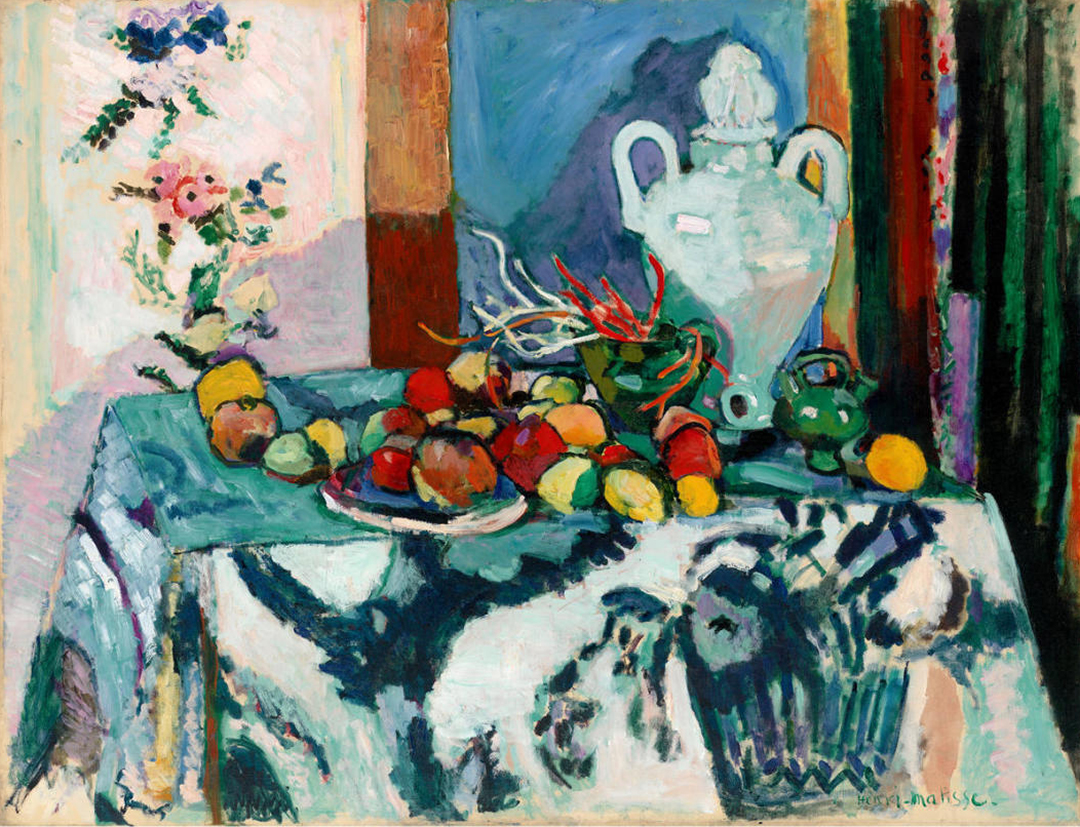 Empty Easel: “The Long History of Food in Art” [*]
Empty Easel: “The Long History of Food in Art” [*]
“Whenever you come across still life paintings depicting things like bread, fruits and vegetables, you’re actually seeing the results of a long tradition of food in art. Historical studies show that the Greeks and Romans prided themselves in the realistic depiction of food in artworks. A glass bowl of fruit was commonly included in Roman paintings to boast of the delicacies that the rich citizens of Rome enjoyed, and of the generous hospitality they had to offer. Even farther back, archaeologists have found drawings of food on the walls of Egyptian pyramids. In ancient Egyptian culture it was believed that those drawings, through magical properties, would nourish those gone on to the after life.
Things haven’t changed much since then. . . today you will find depictions of food on the walls of restaurants, people’s homes and in hotels. We don’t necessarily believe that they nourish us like the Egyptians did but we do clearly find something very appealing, comforting almost, by having paintings of food.
Still life art during the Renaissance: During the Renaissance period, still life objects (often including food) were subtly incorporated into paintings with religious themes. Realism and meticulous detail were prized, and in the late 15th century as interest in strictly religious paintings waned, everyday objects such as vases of flowers became popular by themselves. In the 16th and 17th centuries there was increased interest in scientific examination, and as a result, inanimate objects were studied and depicted by artists in their most realistic form. At the forefront of the food-painting movement were the Dutch realists whose impressive kitchen and market paintings featured various displays of food fare on counters and tables.”*Quotation above is taken directly from the website cited and is the property of that source. It is meant to inform the reader and to give credit where it is due.
 Smithsonian: “Centuries Old Paintings Help Researchers Track Food Evolution” [*]
Smithsonian: “Centuries Old Paintings Help Researchers Track Food Evolution” [*]
“In Fruit Stall, a Baroque masterpiece by artist Frans Snyders, an impressive array of produce appears strewn across baskets and platters on a large wooden table. Some of the items on offer are instantly recognizable: Take, for instance, the green grapes overflowing from a large basket at the center of the table. But other goods, including a split-open green fruit dotted with black seeds, are less familiar to the modern eye. Plant geneticist Ive De Smet and art historian David Vergauwen studied Fruit Stall firsthand during a visit to the State Hermitage Museum in St. Petersburg several years ago. While viewing the work, the pair realized that neither could identify some of the fruits depicted in the scene, De Smet tells CNN’s Kristen Rogers. Initially, the scientist theorized that Snyders, who specialized in still-life paintings featuring fruit, vegetables and animals, lacked talent.
“But [Vergauwen] told me this was actually one of the best painters from the 17th century,” says De Smet in a statement.” So, if that’s how the fruit was depicted, that’s how it should look.”
This discussion inspired the friends to embark on an unconventional research venture newly cataloged in the journal Trends in Plant Science. By combining modern plant genetics with centuries of still-life paintings, the researchers realized that they could create a visual timeline of produce domestication. Now, they hope to crowdsource a library of relevant artworks in order to analyze a wider breadth of sources.
“We started to do some digging and I guess we’ve never stopped digging,” De Smet tells ZME Science’s Tibi Puiu. “Some friends play tennis together or go fishing. Ive and David visit museums, meet other scholars, look at paintings and study the history of our modern foods.”*Quotation above is taken directly from the website cited and is the property of that source. It is meant to inform the reader and to give credit where it is due.
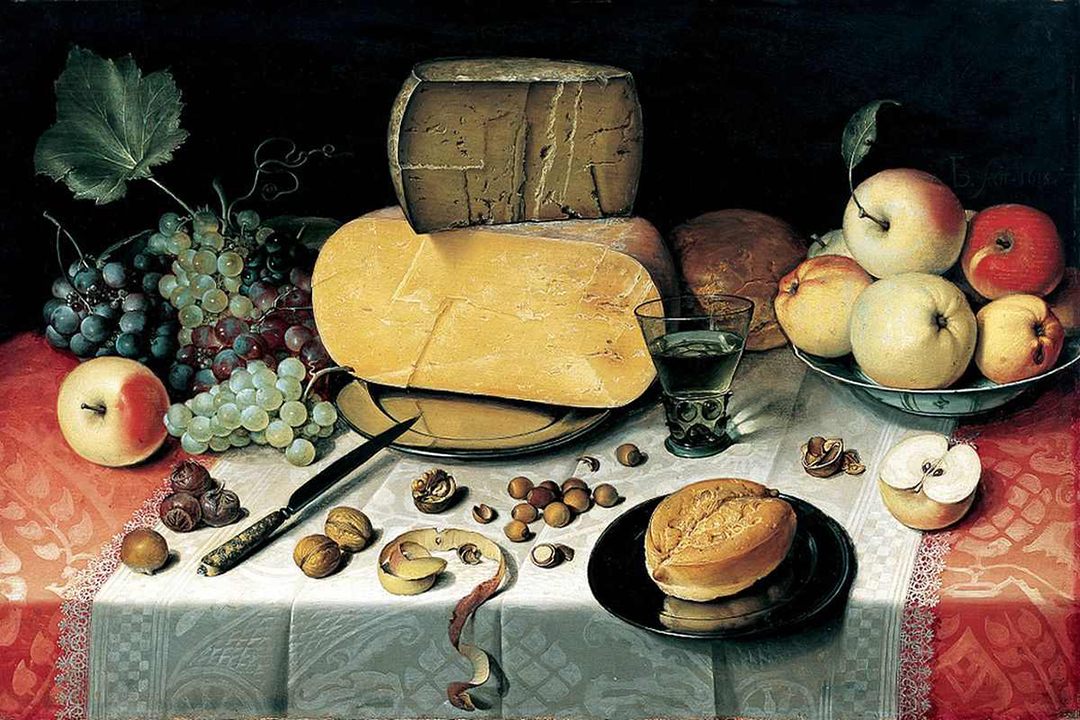 ZME Science: “Art History is Uncovering Hidden Patterns of Fruit and Vegetable Evolution” [*]
ZME Science: “Art History is Uncovering Hidden Patterns of Fruit and Vegetable Evolution” [*]
“An art historian and a biologist form an uncanny pair in order to reveal the timeline of evolution for your favorite fruits ande vegetables. For years, biologists have been tapping into the genomes of both modern and ancient crops in order to trace their long and rich history — from wild plains to your dinner table. However, there are still significant gaps in the timeline of both fruit and vegetable evolution, despite the availability of sophisticated genetic sequencing technology.
An unlikely pair of researchers are now seeking to address these gaps using a unique approach. In a new study, Ive De Smet, a plant biologist at the VIB-UGent Center for Plant Systems Biology in Belgium, and David Vergauwen, an art history lecturer at Amarant in Belgium, demonstrate how old paintings can be highly useful in tracking how fruit and veggies evolved across the last centuries. Are you intrigued? If so, you’re not alone. In fact, you’re encouraged to lend a hand as the two researchers are looking to the public to extend a helping hand by providing pictures of paintings that depict plant-based food.
Evolution Hidden in Art: If you were to travel back in time ten thousand years, you would have been in for a big surprise. Virtually, all the succulent fruits and savory vegetables we all dearly love looked nothing like they do today. In fact, it took countless generations of selective breeding to turn measly wild plants into highly productive food crops. For instance, modern corn is 1,000 times larger and contains at least four times more sugar than the wild variety that used to grow on the plains of Mexico ten thousand years ago.
Sometimes these transitions are obvious, but other times the jigsaw puzzle is more challenging to piece together, which is why biologists are grateful for any input they can find — so why should art be an exception?”*Quotation above is taken directly from the website cited and is the property of that source. It is meant to inform the reader and to give credit where it is due.
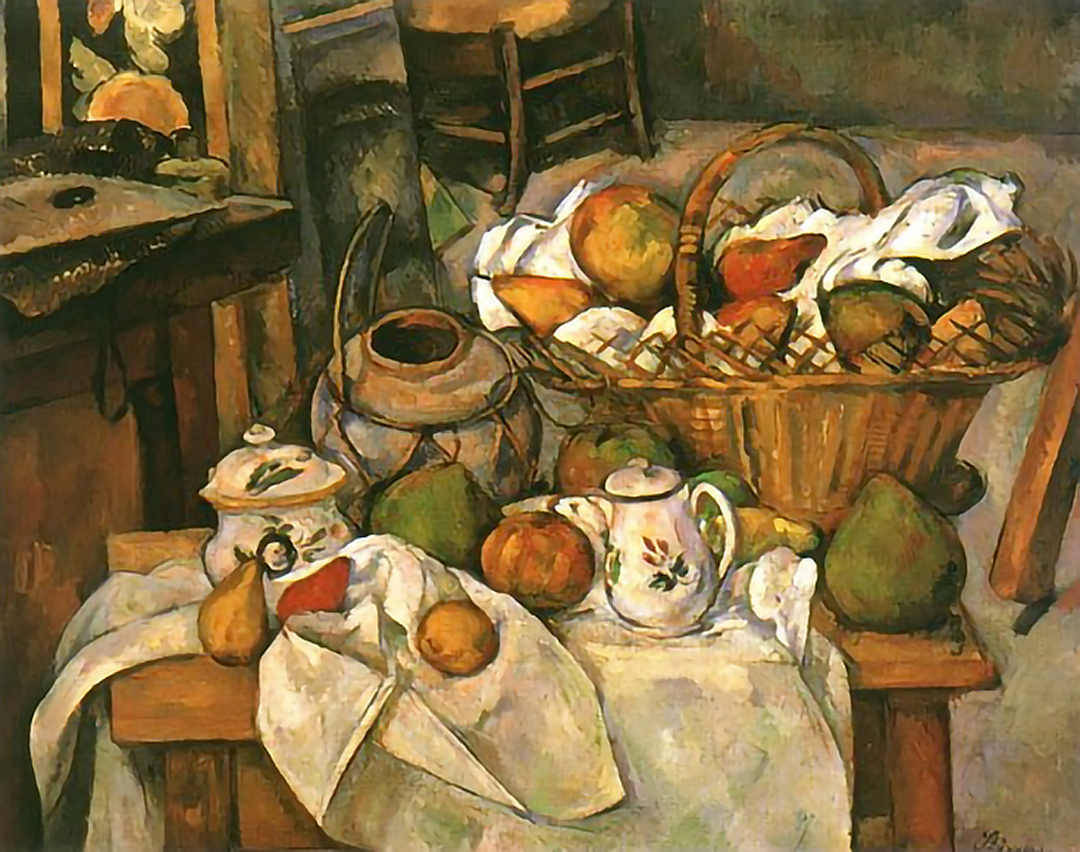 The Met: “Food and Drink in European Painting, 1400–1800” [*]
The Met: “Food and Drink in European Painting, 1400–1800” [*]
“From an apple held by the infant Jesus to a fowl indelicately handled by a lusty kitchen maid, food and drink appear in myriad contexts over four centuries of European painting. The practice of depicting food and feasting stretches back through the Middle Ages to ancient Greece and Rome, where banquets and bacchanals were consuming passions celebrated in literature, painting, and mosaics (as in the trompe l’oeil “unswept floor” mosaic from the emperor Hadrian’s villa at Tivoli, littered with fish bones, fruit pits, nutshells, and other dining table scraps). In the fifteenth century, artists took increasing inspiration from the culture of antiquity and from the natural world, and began to depict objects such as fruits, sweets, and wine vessels, as well as flora and fauna, in both devotional and secular images. These items allowed the artist to display virtuosic skills of observation and description of color, shape, and texture. They also often carried a symbolic meaning or an allusion to the painting’s subject.
The symbolism of food and drink has roots in classical literature. Fruits, nuts, herbs, and grain are discussed in treatises on farming and natural history, and appear widely in mythology as attributes of gods and goddesses—grapes for Bacchus, god of wine; a sheaf of corn or wheat for Ceres, the grain goddess—and in metaphors for virtue and vice. Early religious writings such as the Bible and the Apocrypha, and Christian texts of the Middle Ages and Renaissance are also rich in this imagery, often borrowing from pagan symbolism and occasionally supplanting it. The pomegranate, for example, is depicted in mythological paintings as an attribute of Venus and a symbol of desire, fertility—because of its many seeds—and marriage, but appears as frequently in sacred images of the Virgin and Child. There are several legends of the pomegranate’s creation, contributing to its symbolic potency; according to one, it grew out of blood streaming from the wounded genitals of the lustful Acdestis. The pomegranate is perhaps best known, however, for its fateful role in the myth of Proserpina. Ovid tells in the Metamorphoses of Proserpina’s abduction by Pluto, ruler of the Underworld. Proserpina’s mother, Ceres, secured her release from Hades, but, before leaving Proserpina, ate the seeds from a pomegranate and, because she had consumed food in the Underworld, was compelled to spend part of every year there. Proserpina’s cyclical descent to Hades and rise to Earth was believed to bring about the changing of seasons, and the pomegranate was thus seen as a symbol of resurrection and immortality.”
*Quotation above is taken directly from the website cited and is the property of that source. It is meant to inform the reader and to give credit where it is due.
